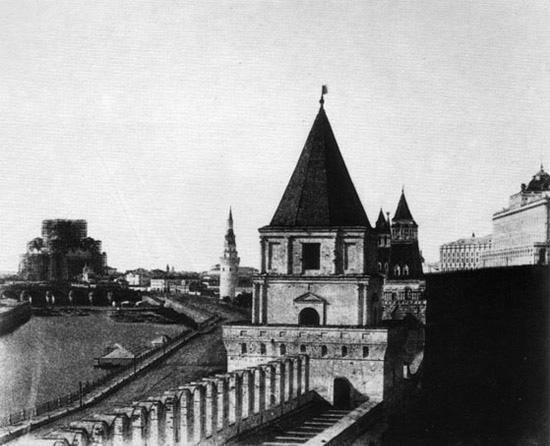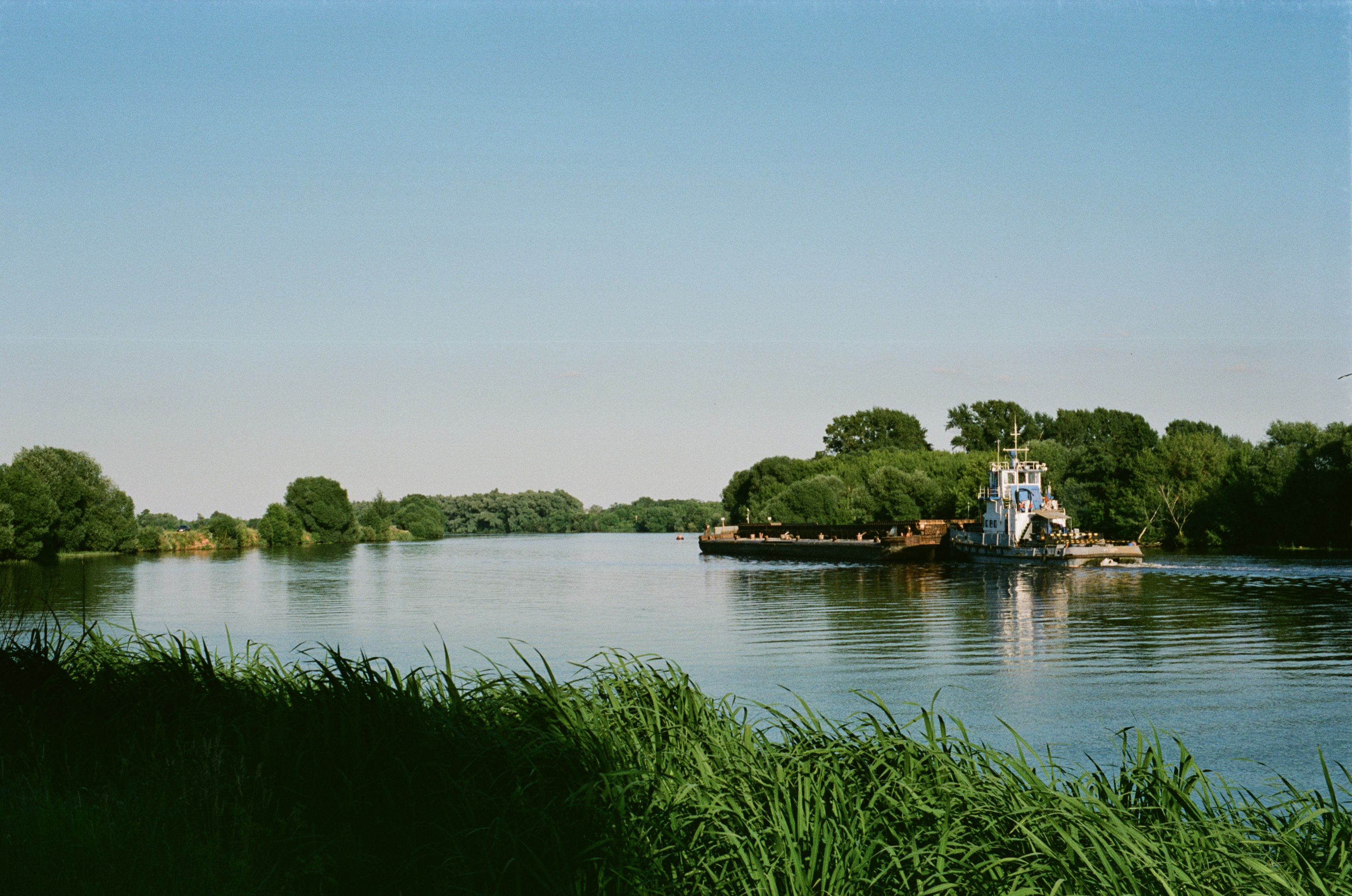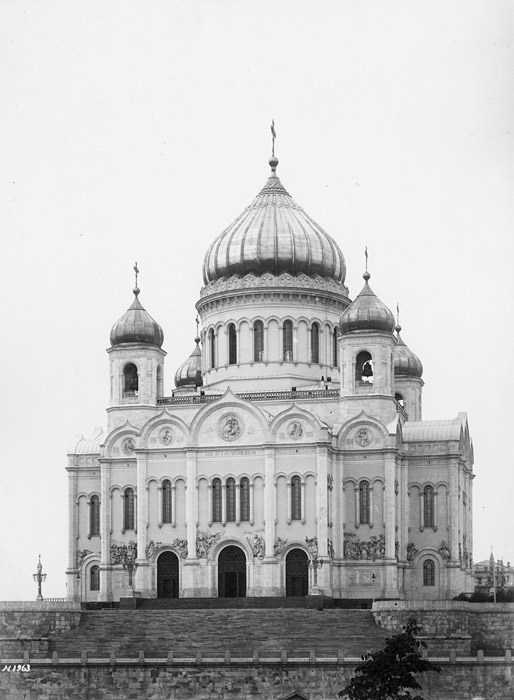|
Cathedral Of Christ The Saviour
The Cathedral of Christ the Saviour (, ) is a Russian Orthodox Church, Russian Orthodox cathedral in Moscow, Russia, on the northern bank of the Moskva River, a few hundred metres southwest of the Kremlin. With an overall height of , it is the third List of tallest Orthodox churches, tallest Orthodox Christian church building in the world. The current church is the second to stand on this site. The original church, built in the 19th century, took more than 40 years to build, and was the site of the 1882 world premiere of the ''1812 Overture'' composed by Pyotr Ilyich Tchaikovsky, Tchaikovsky. It was destroyed in 1931 on the order of the Politburo of the Communist Party of the Soviet Union, Soviet Politburo. The demolition was supposed to make way for a colossal Palace of the Soviets to house the country's legislature, the Supreme Soviet of the USSR. Construction started in 1937 but was halted in 1941 when Operation Barbarossa, Germany invaded the Soviet Union during World War II ... [...More Info...] [...Related Items...] OR: [Wikipedia] [Google] [Baidu] |
Moscow River
The Moskva (, ''Moskva-reka'') is a river that flows through European Russia, western Russia. It River source, rises about west of Moscow and flows roughly east through the Smolensk Oblast, Smolensk and Moscow Oblasts, passing through central Moscow. About southeast of Moscow, at the city of Kolomna, it flows into the Oka (river), Oka, itself a tributary of the Volga, which ultimately flows into the Caspian Sea. History According to recent studies, the current riverbed of the Moskva River was occupied about 12 thousand years ago. In addition to Finnic tribes, the Moskva River is also the origin of Slavic tribes such as the Vyatichi tribe. Etymology The name of the city is thought to be derived from the name of the river. Several theories of the origin of the name have been proposed. The most linguistically well-grounded and widely accepted is from the Proto-Balto-Slavic root *''mŭzg''-/''muzg''- from the Proto-Indo-European "wet", so the name ''Moskva'' might signify a r ... [...More Info...] [...Related Items...] OR: [Wikipedia] [Google] [Baidu] |
Alexander I Of Russia
Alexander I (, ; – ), nicknamed "the Blessed", was Emperor of Russia from 1801, the first king of Congress Poland from 1815, and the grand duke of Finland from 1809 to his death in 1825. He ruled Russian Empire, Russia during the chaotic period of the Napoleonic Wars. The eldest son of Emperor Paul I and Sophie Dorothea of Württemberg, Alexander succeeded to the throne after his father was murdered. As prince and during the early years of his reign, he often used liberal rhetoric but continued Russian absolutism, Russia's absolutist policies in practice. In the first years of his reign, he initiated some minor social reforms and (in 1803–04) major liberal educational reforms, such as building more universities. Alexander appointed Mikhail Speransky, the son of a village priest, as one of his closest advisors. The over-centralized Collegium (ministry), Collegium ministries were abolished and replaced by the Committee of Ministers of the Russian Empire, Committee of Ministers ... [...More Info...] [...Related Items...] OR: [Wikipedia] [Google] [Baidu] |
Constantinople
Constantinople (#Names of Constantinople, see other names) was a historical city located on the Bosporus that served as the capital of the Roman Empire, Roman, Byzantine Empire, Byzantine, Latin Empire, Latin, and Ottoman Empire, Ottoman empires between its consecration in 330 until 1930, when it was renamed to Istanbul. Initially as New Rome, Constantinople was founded in 324 during the reign of Constantine the Great on the site of the existing settlement of Byzantium, and shortly thereafter in 330 became the capital of the Roman Empire. Following the collapse of the Western Roman Empire in the late 5th century, Constantinople remained the capital of the Eastern Roman Empire (also known as the Byzantine Empire; 330–1204 and 1261–1453), the Latin Empire (1204–1261), and the Ottoman Empire (1453–1922). Following the Turkish War of Independence, the Turkish capital then moved to Ankara. Although the city had been known as Istanbul since 1453, it was officially renamed as Is ... [...More Info...] [...Related Items...] OR: [Wikipedia] [Google] [Baidu] |
Byzantine Empire
The Byzantine Empire, also known as the Eastern Roman Empire, was the continuation of the Roman Empire centred on Constantinople during late antiquity and the Middle Ages. Having survived History of the Roman Empire, the events that caused the fall of the Western Roman Empire in the 5th centuryAD, it endured until the fall of Constantinople to the Ottoman Empire in 1453. The term 'Byzantine Empire' was coined only after its demise; its citizens used the term 'Roman Empire' and called themselves 'Romans'. During the early centuries of the Roman Empire, the western provinces were Romanization (cultural), Latinised, but the eastern parts kept their Hellenistic culture. Constantine the Great, Constantine I () legalised Christianity and moved the capital to Constantinople. Theodosius I, Theodosius I () made Christianity the state religion and Greek gradually replaced Latin for official use. The empire adopted a defensive strategy and, throughout its remaining history, expe ... [...More Info...] [...Related Items...] OR: [Wikipedia] [Google] [Baidu] |
Hagia Sophia
Hagia Sophia (; ; ; ; ), officially the Hagia Sophia Grand Mosque (; ), is a mosque and former Church (building), church serving as a major cultural and historical site in Istanbul, Turkey. The last of three church buildings to be successively erected on the site by the Byzantine Empire, Eastern Roman Empire, it was completed in AD 537, becoming the world's largest interior space and among History of Roman and Byzantine domes, the first to employ a fully pendentive dome. It is considered the epitome of Byzantine architecture and is said to have "changed the history of architecture". From its dedication in 360 until 1453 Hagia Sophia served as the cathedral of Constantinople in the Divine Liturgy#Byzantine Rite, Byzantine liturgical tradition, except for the period 1204‑1261 when the Latin Empire, Latin Crusaders installed their own Hierarchy of the Catholic Church, hierarchy. After the fall of Constantinople in 1453, it served as a mosque, having its Minaret, minarets added ... [...More Info...] [...Related Items...] OR: [Wikipedia] [Google] [Baidu] |
Konstantin Thon
Konstantin Andreyevich Thon or Ton (; October 26, 1794 – January 25, 1881) was a Russian architect who was one of the most notable architects during the reign Nicholas I. His major works include the Cathedral of Christ the Saviour, the Grand Kremlin Palace and the Kremlin Armoury in Moscow. Early life Konstantin, born in St. Petersburg to the family of a German jeweller, was one of three Thon brothers who all rose to become notable architects. He studied at the Imperial Academy of Arts (1803–15) under the Empire Style architect Andrey Voronikhin, best remembered for his work on the Kazan Cathedral, situated right in the middle of the Nevsky Prospekt. He studied Italian art in Rome from 1819 to 1828, and on his return home was admitted to the academy as its member (1830) and professor (1833). In 1854, he was appointed rector of the architectural division of the academy. Thon first attracted public attention with his sumptuous design for the interiors of the Academy ... [...More Info...] [...Related Items...] OR: [Wikipedia] [Google] [Baidu] |
Nicholas I Of Russia
Nicholas I, group=pron (Russian language, Russian: Николай I Павлович; – ) was Emperor of Russia, List of rulers of Partitioned Poland#Kings of the Kingdom of Poland, King of Congress Poland, and Grand Duke of Finland from 1825 to 1855. He was the third son of Paul I of Russia, Paul I and younger brother of his predecessor, Alexander I of Russia, Alexander I. Nicholas's thirty-year reign began with the failed Decembrist revolt. He is mainly remembered as a reactionary whose controversial reign was marked by geographical expansion, centralisation of administrative policies, and repression of dissent both in Imperial Russia, Russia and among its neighbors. Nicholas had a happy marriage that produced a large family, with all of their seven children surviving childhood. Nicholas's biographer Nicholas V. Riasanovsky said that he displayed determination, singleness of purpose, and an iron will, along with a powerful sense of duty and a dedication to very hard work. ... [...More Info...] [...Related Items...] OR: [Wikipedia] [Google] [Baidu] |
Sparrow Hills
Sparrow Hills (, ), formerly known as Lenin Hills (, ), is a hill on the right bank of the Moskva River and one of the highest points in Moscow, reaching a height of above the river level. The observation platform is on a steep bank above the river, or above sea level. The Luzhniki Stadium, Central Lenin Stadium, where the opening and closing ceremonies for the 1980 Summer Olympics took place, is right below, across the Moskva River. Next to it is the Novodevichy Convent, with its Naryshkin Baroque towers. Not far from the observation platform is the Luzhniki Metro Bridge. The two-level Metro-Bridge traverses the river to link Komsomolsky Prospekt with Vernadsky Prospekt. It serves two urban transport systems: motor vehicles and the Moscow Metro subway. The glass-walled subway station Vorobyovy Gory (Moscow Metro), Vorobyovy Gory is at the lower level of the bridge. The hills, immortalized by many Russian poets and writers, have been named after the village , which was ac ... [...More Info...] [...Related Items...] OR: [Wikipedia] [Google] [Baidu] |
1852 XXC
Year 185 ( CLXXXV) was a common year starting on Friday of the Julian calendar. At the time, it was known as the Year of the Consulship of Lascivius and Atilius (or, less frequently, year 938 ''Ab urbe condita''). The denomination 185 for this year has been used since the early medieval period, when the Anno Domini calendar era became the prevalent method in Europe for naming years. Events By place Roman Empire * Nobles of Britain demand that Emperor Commodus rescind all power given to Tigidius Perennis, who is eventually executed. * Publius Helvius Pertinax is made governor of Britain and quells a mutiny of the British Roman legions who wanted him to become emperor. The disgruntled usurpers go on to attempt to assassinate the governor. * Tigidius Perennis, his family and many others are executed for conspiring against Commodus. * Commodus drains Rome's treasury to put on gladiatorial spectacles and confiscates property to support his pleasures. He participates a ... [...More Info...] [...Related Items...] OR: [Wikipedia] [Google] [Baidu] |
Symbol
A symbol is a mark, Sign (semiotics), sign, or word that indicates, signifies, or is understood as representing an idea, physical object, object, or wikt:relationship, relationship. Symbols allow people to go beyond what is known or seen by creating linkages between otherwise different concepts and experiences. All communication is achieved through the use of symbols: for example, a red octagon is a common symbol for "Stop sign, STOP"; on maps, blue lines often represent rivers; and a red rose often symbolizes love and compassion. Numerical digit, Numerals are symbols for numbers; Letter (alphabet), letters of an alphabet may be symbols for certain phonemes; and personal names are symbols representing individuals. The academic study of symbols is called semiotics. In the arts, Artistic symbol, symbolism is the use of a abstract and concrete, concrete element to represent a more abstract idea. In cartography, an organized collection of symbols forms a map layout, legend for a ma ... [...More Info...] [...Related Items...] OR: [Wikipedia] [Google] [Baidu] |
Freemasonry
Freemasonry (sometimes spelled Free-Masonry) consists of fraternal groups that trace their origins to the medieval guilds of stonemasons. Freemasonry is the oldest secular fraternity in the world and among the oldest still-existing organizations in history. Modern Freemasonry broadly consists of three main traditions: *Anglo-American Freemasonry, Anglo-American style Freemasonry, which insists that a "volume of sacred law", such as the Bible, Quran, or other religious text be open in a working Masonic lodge, lodge, that every member professes belief in a God, supreme being, that only men be admitted, and discussion of religion or politics does not take place within the lodge. *Continental Freemasonry or Liberal Freemasonry which has continued to evolve beyond these restrictions, particularly regarding religious belief and political discussion. *Co-Freemasonry, Women Freemasonry or Co-Freemasonry, which includes organizations that either admit women exclusively (such as the Ord ... [...More Info...] [...Related Items...] OR: [Wikipedia] [Google] [Baidu] |
Neoclassicism
Neoclassicism, also spelled Neo-classicism, emerged as a Western cultural movement in the decorative arts, decorative and visual arts, literature, theatre, music, and architecture that drew inspiration from the art and culture of classical antiquity. Neoclassicism was born in Rome, largely due to the writings of Johann Joachim Winckelmann during the rediscovery of Pompeii and Herculaneum. Its popularity expanded throughout Europe as a generation of European art students finished their Grand Tour and returned from Italy to their home countries with newly rediscovered Greco-Roman ideals. The main Neoclassical movement coincided with the 18th-century Age of Enlightenment, and continued into the early 19th century, eventually competing with Romanticism. In architecture, the style endured throughout the 19th, 20th, and into the 21st century. European Neoclassicism in the visual arts began in opposition to the then-dominant Rococo style. Rococo architecture emphasizes grace, Ornament ... [...More Info...] [...Related Items...] OR: [Wikipedia] [Google] [Baidu] |








